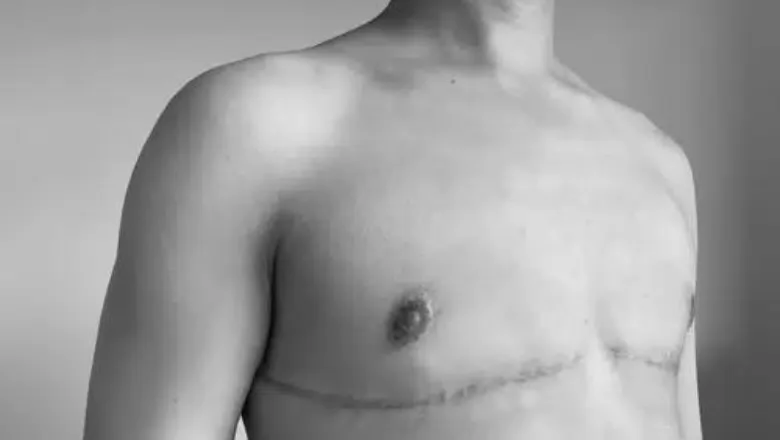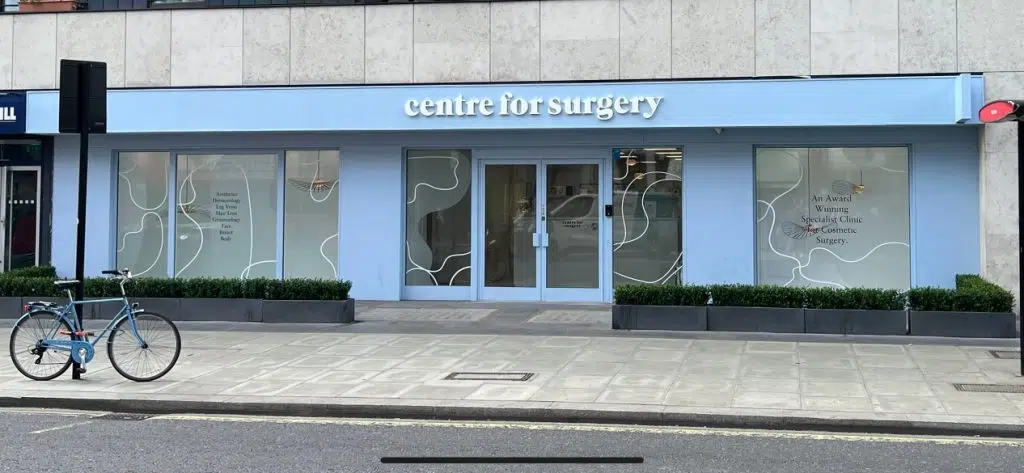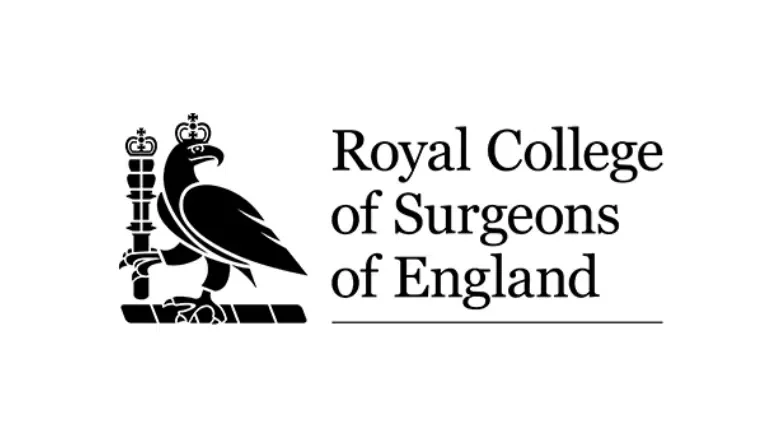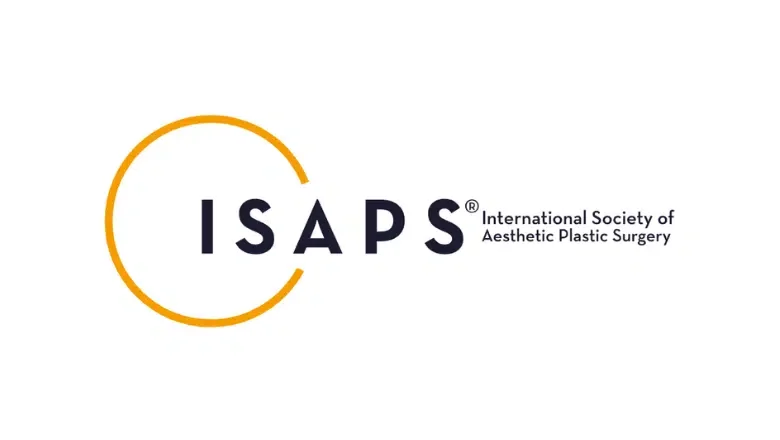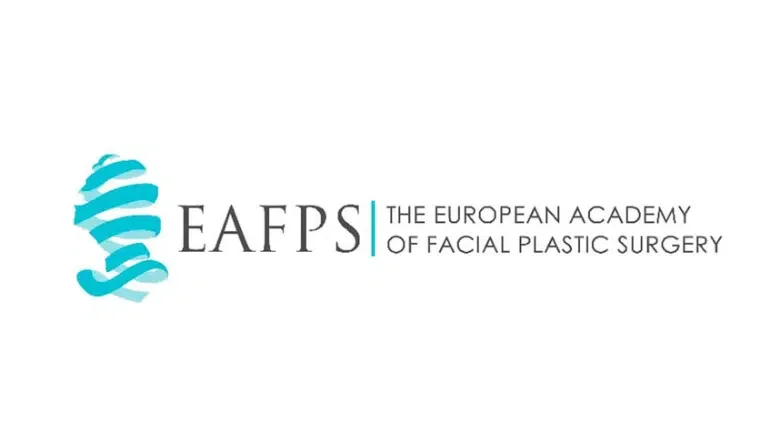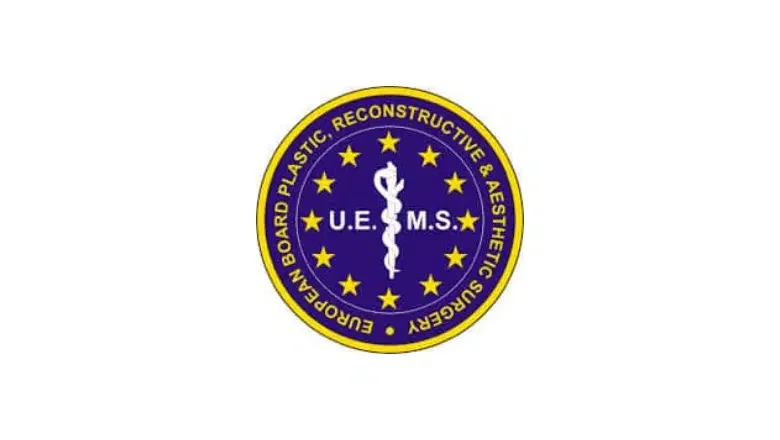Chest masculinisation, commonly referred to as top surgery, is a transformative procedure that plays a vital role in the journey of many individuals seeking gender affirmation. The procedure typically entails the excision of breast tissue and excess skin, and the sculpting of the remaining tissue to engineer a chest with a more masculine contour. This procedure is often pursued by transgender and non-binary individuals who identify more closely with a male or masculine gender identity.
At Centre for Surgery, we possess a distinct specialisation in Female-to-Male (FTM) top surgeries, including both double incision top surgery and keyhole top surgery. These areas of surgical practice require a unique blend of technical skill, precision, and a deep understanding of the psychological and emotional aspects involved in gender affirmation. This sensitivity to our patients’ needs and goals forms the bedrock of our care approach.
Our surgeons are not just experts in their field; they are dedicated professionals who have chosen to focus their careers on helping individuals navigate their gender transition journey with confidence and dignity. They are active members of distinguished professional bodies such as the British Association of Aesthetic Plastic Surgeons (BAAPS), the British Association of Plastic, Reconstructive and Aesthetic Surgeons (BAPRAS), and the International Society of Aesthetic Plastic Surgery (ISAPS).
These affiliations demonstrate our commitment to excellence, as we continually stay abreast of the latest developments and best practices in the field of gender affirmation surgery. We strive to offer our patients not just surgical procedures, but a holistic, patient-centred experience that prioritises their wellbeing, comfort, and long-term satisfaction.
At Centre for Surgery, we believe in the power of transformation. We understand that every individual’s journey is unique, and we aim to support you every step of the way. Trust us to guide you through this life-changing decision with the care, respect, and expertise you deserve.
Embarking on the Journey to Wellness – The Preamble of Surgical Anticipation
In the context of your transformation from female to male, should you opt for chest masculinisation surgery, several preparatory measures are within your grasp to ensure the procedure proceeds smoothly:
Decipher the risks and gains: Similar to all surgical procedures, chest masculinisation harbours potential risks and complications. It’s crucial that you possess a thorough understanding of the procedure’s risks and gains, thereby facilitating an informed judgement on whether it is an appropriate decision for your journey.
Curtail smoking: The activity of smoking escalates the risk of complications during the surgery and in the postoperative period. If you are a smoker, it’s of significant importance to abandon the habit a few weeks prior to your scheduled surgery.
Steer clear of anticoagulant medications: Certain pharmaceuticals, including aspirin and ibuprofen, may escalate the risk of haemorrhage during the surgical procedure and throughout the recovery phase. Your surgeon will equip you with a comprehensive list of medications to circumvent in the weeks preceding your surgery.
Attain optimal physical health: Ensuring you’re in prime physical health can aid in a swifter recovery following surgery. Maintain a nutritious diet, engage in regular physical activity, and ensure ample rest in the weeks preceding your surgery.
The operative phrase in your surgical journey is preparation. A comprehensive understanding of the procedure, abstaining from habits that might hinder recovery, managing medication wisely, and maintaining your physical health are all crucial in ensuring the best possible outcome. Remember, your recovery begins well before the first incision.
Set the Stage for Healing – Post-operative Care Plans
Post-surgery, it will be necessary to allocate time away from work and refrain from rigorous activities for a few weeks. Establishing a structured recovery plan, including assistance with daily tasks if required, is crucial.
Consider the following preparatory steps:
Organise leave from work: A period of leave from work or education is necessary to ensure a proper healing process post-surgery. Depending on the complexity of the procedure and the nature of your work, plan for a leave of absence ranging from two to four weeks.
Coordinate transportation: Post-surgery, you’ll need a trusted individual to chauffeur you home from our surgical facility. Additionally, transportation assistance may be necessary for subsequent follow-up visits during your recuperation phase.
Establish postoperative support: In the initial days or weeks following the surgery, you may require help with daily tasks, including bathing, dressing, and household chores. Consider arranging for a close friend or family member to be available, or contemplate hiring a professional caregiver for assistance.
Procure necessary supplies: Before your surgery, ensure you’ve stocked up on essential items such as gauze, bandages, and any prescribed medications. It might also be beneficial to invest in comfortable clothing that is loose-fitting and easy to manoeuvre in during your recovery.
Prep your home: A clean, clutter-free environment will be more conducive to recovery. Prior to your surgery, make sure your home is tidy. It might be worth considering a rearrangement of furniture or relocating items to streamline navigation within your home during the recovery phase.
Emphasising the importance of the recuperation period, a well-planned post-operative stage is crucial for successful healing. By anticipating and addressing possible challenges in advance, you can create a comfortable, supportive space for your recovery journey.
Progression of Healing after Chest Masculinisation Surgery – Post-Mastectomy
In the immediate aftermath of chest masculinisation surgery (breast removal) for female to male (FTM) transition, the patient typically remains in our recovery suite for several hours post-procedure. This crucial timeframe is monitored meticulously by our medical personnel to ensure stability and comfort. Here are key components of what transpires during this immediate post-operative phase:
Vital signs assessment: Your vital parameters – heart rate, blood pressure, and respiratory rate – will be closely monitored by the medical team to ascertain your stability.
Pain management: It’s common to experience pain or discomfort subsequent to the surgery. Our medical team will administer pain relief medication and deploy additional pain management strategies as required.
Fluid drainage management: Depending on the surgical approach and surgeon’s discretion, you may have drains inserted to aid in the removal of surplus fluid from the surgical site. Our medical staff will oversee the performance of these drains, ensuring they function optimally.
Complications surveillance: Despite their rarity, complications can arise following any surgical procedure. Our medical team will vigilantly watch for signs of complications such as haemorrhage or infection, and will take swift action if needed.
Instruction provision: You’ll receive pertinent information and instructions for the post-operative period from the medical team. This includes guidance on when to administer medications, how to manage wound care or drains, and when to arrange follow-up appointments.
The immediate aftermath of chest masculinisation surgery is a pivotal stage in your transition journey. Ensuring your comfort, safety, and proper healing is our top priority. This comprehensive approach sets the foundation for a successful recovery.
The Initial Seven Days after FTM Surgery
The initial week following chest masculinisation surgery (breast removal) in a female-to-male (FTM) transition is an imperative phase for convalescence. It’s a period where rest is paramount. Ideally, recline on your back at an angle of approximately 45 degrees to ensure comfort and avoid any form of strenuous activity. Here is an overview of what typically transpires during the first week post-surgery:
Pain management: It’s not uncommon to encounter pain, inflammation, and discomfort post-operation. Your surgeon will prescribe pain relief medication and recommend additional pain management strategies to assist in alleviating these symptoms.
Restful healing: The first week following the procedure calls for ample rest to allow for effective healing. Activities such as strenuous exertion, heavy lifting, or exercise should be firmly avoided during this time.
Wound dressing: Post-surgery, your incision sites will be covered with dressings or bandages to safeguard the area and facilitate healing. You will receive clear instructions from your surgeon on how to maintain these dressings and when they should be replaced.
Drain care: If surgical drains were installed during the operation, your duty will be to observe and care for them in alignment with your surgeon’s directives.
Postoperative consultation: Within the first week subsequent to surgery, you will have a scheduled appointment with your surgeon. This is to assess your recovery progression and to ascertain that there are no arising complications.
Emotional support: The initial week can potentially present emotional challenges for some patients as they adjust to their new physique and cope with any discomfort or pain. Emotional support from friends, family, or a professional therapist can prove incredibly beneficial during this time.
Remember, the initial week post-surgery is a vital time for healing and adjustment. Adequate rest, proper care of the surgical site, and emotional support are critical elements to ensure a smooth and successful recovery process.
Fortnight Following Surgery: Weeks 2 and 3
The subsequent two weeks following chest masculinisation surgery (breast removal) as part of a female to male (FTM) transition constitute another essential phase of recuperation. During this span, you’ll notice advancements in your healing process and may be capable of resuming some light activities, such as mild ambulation within your home. It is still, however, crucial to avoid any heavy lifting or intensive exercise. Here’s an overview of what to anticipate during this phase:
Pain management: Although some degree of discomfort and pain may persist, it is expected to be significantly diminished compared to the first post-operative week. Your surgeon may adjust your pain medication regimen as deemed appropriate.
Wound dressing: During this period, you might need to replace your dressings or bandages, following the surgeon’s guidelines.
Engaging in light activities: Depending on the extent of the surgery and your unique healing progression, you might be capable of initiating light activities. This could comprise gentle stretching or ambulating within your home environment.
Scar healing: During this time, your incision sites may start to appear less inflamed and red. However, it’s quite normal for scar tissue to continue developing and changing for several months subsequent to the surgery.
Emotional support: As you continue adjusting to your transformed physique, emotional support from friends, family, or a professional therapist can prove beneficial during this transition period.
Weeks 2 and 3 post-operation mark a gradual shift in your recovery journey. It’s a time to focus on nurturing your physical and emotional wellbeing as you continue to heal and adjust to your new body. Continued patience, rest, and support are key to fostering a smooth transition during this period.
Month into the Recovery: Weeks 4 and 5
By the fourth week following chest masculinisation surgery, you should observe significant healing progress. Most daily activities, such as driving and returning to work, can be gradually resumed. However, any strenuous exertion or heavy lifting should still be avoided for a few more weeks. Low-intensity cardio activities, such as running, cycling, or using an elliptical trainer, can be cautiously initiated. During this period, your surgical scars should also start to appear less prominent.
Reaching the Milestone: Week 6
By the sixth week post-surgery, a majority of the swelling and bruising would have markedly reduced, and your surgical sites should be predominantly healed. More vigorous exercises and activities may be cautiously resumed, although it’s crucial to adhere to your surgeon’s guidelines and avoid overexertion.
Reaching the one-month mark post-surgery represents significant progress in your recovery journey. By week six, you should be steadily regaining your strength and reintegrating into your normal routine. It’s important to remember that while your body may be showing clear signs of healing, it’s still recuperating and needs to be treated with care and patience.
Promoting a Smooth Post-Surgical Journey – Top Tips
- Adhere to Instructions: Precisely follow the post-operative instructions provided by your surgical team. This includes wound care, medications, and activity restrictions. Your surgeon’s advice is tailored to ensure your recovery progresses smoothly.
- Sufficient Rest: Prioritise ample rest and sleep to allow your body the time it needs to heal and recover. Although it’s good to gradually reintegrate gentle activities into your routine, don’t rush your recovery.
- Healthy Nutrition: Fuel your body with wholesome, nutritious foods to promote healing and immune function. Stay hydrated by drinking plenty of fluids.
- Gradual Exercise: As mentioned earlier, begin by engaging in light activities such as gentle walking or stretching. Gradually increase the intensity and duration of your exercise as your strength and energy levels improve. Always follow your surgeon’s guidelines regarding exercise and activity.
- Regular Follow-ups: Attend all post-operative appointments and communicate openly with your surgical team about your progress. Never hesitate to ask questions or voice any concerns.
- Emotional Support: Recovery isn’t just physical; it’s emotional too. Connect with friends, family, or seek professional help if needed to navigate through this transformative journey. Remember, it’s normal to experience a mix of emotions after surgery.
- Scar Care: Follow your surgeon’s instructions regarding scar care. This often involves keeping the area clean and moisturised, avoiding sun exposure, and possibly using silicone sheets or gel for scar minimisation.
- Patience is Key: Healing takes time and every individual’s recovery timeline is unique. Don’t compare your progress to others and remember that minor setbacks are a normal part of the recovery journey.
Remember, taking good care of yourself post-surgery enhances your body’s healing capacity, ensures a smoother recovery process, and gets you back to your routine at a comfortable pace.
Frequently Asked Questions Regarding Post-operative Recovery Following Top Surgery
Can I sleep on my side after top surgery?
Post top surgery (breast removal) for female to male (FTM) transition, it is typically advised that patients sleep on their backs, not on their sides or stomach, for the first several weeks following the surgery. Sleeping on your side or stomach can put pressure on your chest and potentially disrupt the healing process or affect the cosmetic outcome. It is also recommended to prop yourself up with pillows to help reduce swelling and improve comfort while sleeping. The timeline for when you can start sleeping on your side again may vary depending on your individual healing process and your surgeon’s advice.
How long does it take for nipples to heal after top surgery?
The healing process for nipples post-top surgery is usually spread over several weeks to a few months. During this initial healing phase, it’s common for the nipples to exhibit signs of tenderness, soreness, or swelling. Surgeons often employ the use of dressings or compression garments to aid the healing process and safeguard the nipples. Sensations in the nipples might range from numbness to hypersensitivity in this early stage. As the healing process unfolds, sensitivity should gradually return. The area surrounding the incision sites might appear raised or reddened, and the nipples could appear misshapen or flattened. However, as healing progresses, the nipples should gradually return to their natural shape and prominence.
When can I shower after top surgery?
The appropriate timing for showering post top surgery can vary based on specific instructions provided by your surgeon, as well as the type of dressings or bandages utilised. In general, surgeons typically advise patients to wait until their first post-operative appointment before resuming showers, usually 1-2 weeks following surgery. In the initial post-operative period, it is crucial to maintain the chest area dry to prevent infection and facilitate incision site healing. Your surgeon will provide explicit instructions on how to manage your incision sites during this initial phase, which may include recommendations for sponge baths or cleaning the area with baby wipes. Once given clearance for showering, it’s crucial to avoid soaking or vigorously scrubbing the incision sites. Instead, allow water to gently cascade over the chest and use a mild soap to delicately clean the area. Avoid exposure to hot water as it can exacerbate swelling and inflammation.
When can I lift my arms after top surgery?
Post top surgery, patients are generally advised against raising their arms above their head for at least the first week following the procedure. This restriction is due to the strain that such movements place on the chest muscles and incision sites, potentially slowing the healing process and increasing the risk of complications.
How long does it take for sensation to return after top surgery?
Regaining sensation after top surgery can be a gradual process and varies from patient to patient. While some individuals may begin to notice returning sensation a few weeks after surgery, for others, it may take several months or more. The sensation may return as tingling, itching, or a pins-and-needles sensation. Keep in mind that while most patients do experience some return of sensation, it may not be identical to the sensation experienced pre-surgery. In some cases, certain areas, particularly around the nipple-areola complex, may have permanently reduced sensation.
How long does swelling last post top surgery?
Swelling is a commonplace post-operative symptom following FTM top surgery and can persist for weeks or even months. The severity and duration of swelling vary depending on individual healing timelines and the extent of the surgical procedure. Initial post-operative swelling can be considerable, typically peaking within 48-72 hours post-surgery. The swelling should steadily decrease over the ensuing weeks and months as healing progresses. Generally, most patients observe a significant reduction in swelling within 4-6 weeks post-surgery. However, complete resolution of swelling may take several months. Any concerns or queries related to post-operative swelling should be discussed with your surgeon.
How soon after top surgery can I return to work?
The timeline for returning to work after top surgery largely depends on the nature of your job. If your work is primarily sedentary, such as desk work, you might be able to return to work after two weeks. However, if your job involves physical activity, heavy lifting, or strenuous movements, you may need to wait up to 6 weeks or more. Your surgeon will be able to provide specific advice based on your individual situation and recovery progress.
Choosing Centre for Surgery for FTM Top Surgery: Your Decision, Our Commitment
When considering a significant procedure such as FTM top surgery, you want to entrust your care to a surgical team that combines expertise, patient-focused care, and a commitment to achieving your desired outcome. At Centre for Surgery, we pride ourselves on these qualities.
- Specialised Expertise: Our team includes highly skilled surgeons who have a wealth of experience performing chest masculinisation surgery. They are up-to-date with the latest techniques and advancements in the field, ensuring that you receive state-of-the-art surgical care.
- Patient-Centred Care: We recognise that each individual’s journey is unique. Our team is committed to providing personalised care that respects your identity and goals. From the initial consultation to post-operative care, we are here to support you every step of the way.
- Quality of Care: Centre for Surgery is accredited by relevant health authorities, ensuring that we meet high standards for patient safety, quality of care, and ethical practices.
- Comprehensive Pre-Operative Planning: We believe in educating our patients so they can make informed decisions about their care. We will discuss the procedure in detail, including potential risks and benefits, and work with you to create a surgical plan that aligns with your goals for transition.
- Post-Operative Support: Recovery doesn’t end when you leave our facility. We provide thorough follow-up care to monitor your healing process, and our team is available to address any concerns or complications that may arise.
- Private, Welcoming Environment: Our centre is designed to be a safe, inclusive space where you can feel comfortable expressing your needs and concerns.
By choosing Centre for Surgery for your FTM top surgery, you are partnering with a team that values your individuality, respects your decisions, and is dedicated to helping you achieve a body that aligns with your identity. We understand the importance of this step in your transition and are committed to making your surgical experience as smooth and positive as possible.

